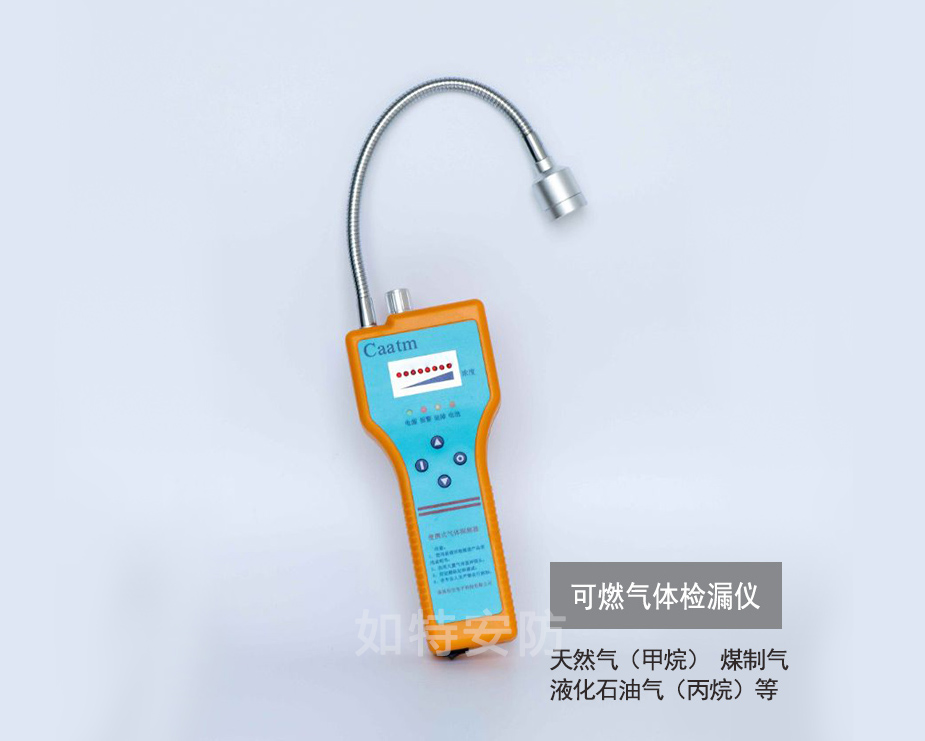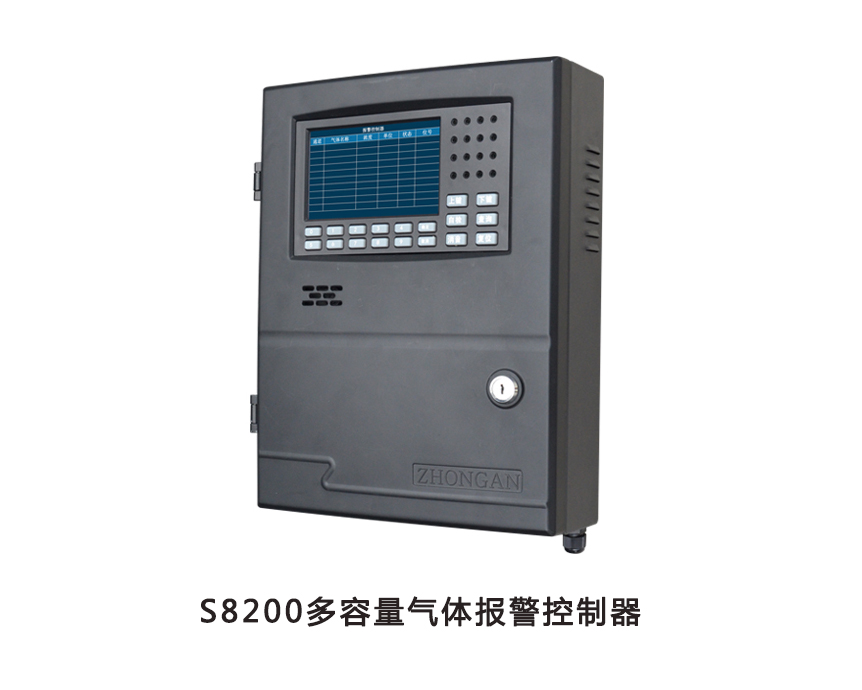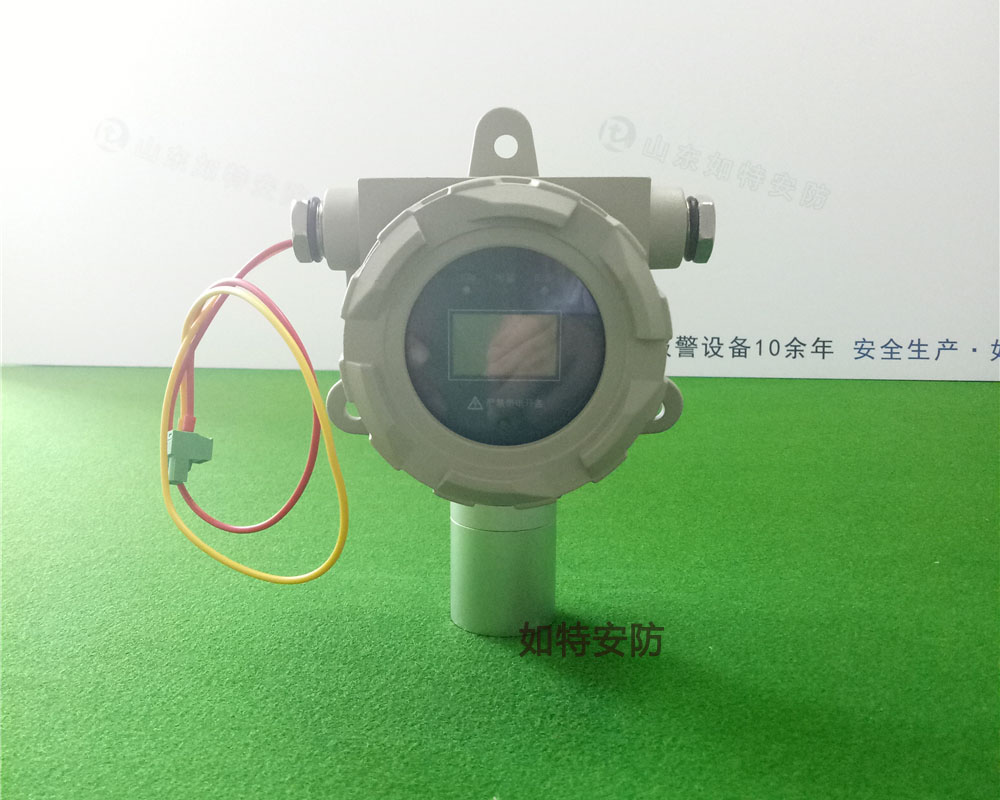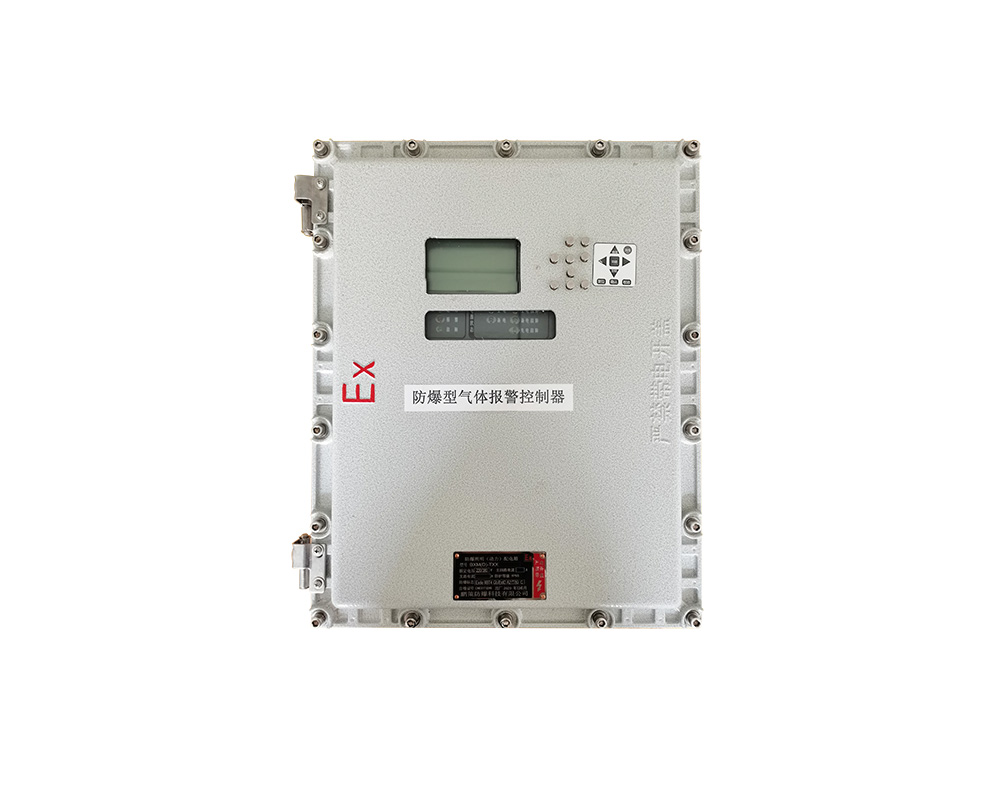嵌入微反应器系统气体传感器的自检程序(10)
文章出处:如特安防 人气:发表时间:2018-09-03 10:38:55
Acknowledgments
Part of this work was financed through the EU-funded projects “NANOS4” (FP6-NMP4–CT–2003-001528) and SNOOPY SEC-2012.3.4-4 (2014–2016). Funds for covering the costs to publish in open access were not received by the EU as this paper was published after project termination.
Appendix A
SnO2 nanowires were been synthesized by means of evaporation-condensation method according to the protocol described elsewhere [33,34]. Briefly, alumina substrates (2 mm × 2 mm × 0.25 mm in size) are pre-patterned with Pt acting as catalyst for the growth of nanowires. SnO2 powders are placed in a tubular furnace and heated at a temperature of 1370 °C in a background of 100 mbar of Ar; substrates are lodged downstream in a colder region at around T = 800 °C. Thereafter, Pd nanoparticles are sputtered at room temperature over the nanowire mesh by means of RF magnetron sputtering up to a Pd/Sn ratio of 3(wt %.). Pt electrodes with a comb-like shape and a gap of 200 nm are deposited over the tin oxide layer to provide contacts for two-probe electrical measurements. A Pt meander, acting both as a heater resistance and a temperature sensor is sputtered on the rear side of the substrate. Finally, the device is soldered on a commercial TO38 case. Full details of the sensor layout are provided in [35].
SnO2 nanowires were been synthesized by means of evaporation-condensation method according to the protocol described elsewhere [33,34]. Briefly, alumina substrates (2 mm × 2 mm × 0.25 mm in size) are pre-patterned with Pt acting as catalyst for the growth of nanowires. SnO2 powders are placed in a tubular furnace and heated at a temperature of 1370 °C in a background of 100 mbar of Ar; substrates are lodged downstream in a colder region at around T = 800 °C. Thereafter, Pd nanoparticles are sputtered at room temperature over the nanowire mesh by means of RF magnetron sputtering up to a Pd/Sn ratio of 3(wt %.). Pt electrodes with a comb-like shape and a gap of 200 nm are deposited over the tin oxide layer to provide contacts for two-probe electrical measurements. A Pt meander, acting both as a heater resistance and a temperature sensor is sputtered on the rear side of the substrate. Finally, the device is soldered on a commercial TO38 case. Full details of the sensor layout are provided in [35].
The MEMS microheaters were fabricated by a combination of dry and wet etching techniques starting from silicon-on-insulator (SOI) wafers [44,45]. The microstructuring leads to free-standing silicon bridges suspended over a KOH etch groove. Pt electrodes sputtered onto the front side of the silicon bridges served as heater meanders and temperature sensors and as bottom contacts for SnO2 thin films. Thin films of SnO2 were deposited onto pre-processed MEMS microheaters by means of the RGTO (rheotaxial growth and thermal oxidation) technique [43]. The preparation of catalytically enhanced SnO2 starts with the evaporation of a three-layer stack of Sn/Au/Sn onto a pre-fabricated MEMS heater substrate. After evaporation the metallic films are annealed in ambient air at a temperature of 600 °C for several hours to completely convert the tin (Sn) into nano-crystalline SnO2 films [43]. During oxidation nano-crystalline SnO2 films with an average grain size of about 20 nm are formed, alongside with interspersed Au catalyst clusters, which phase-separate from the emerging SnO2 during the tin oxidation process.
Author Contributions
Andreas Helwig designed and built the EMRS devices and performed gas sensing tests on these, Angelika Hackner performed the HMDS poisoning experiments on the SnO2 nanowire samples and performed the corresponding gas sensing tests, Gerhard Müller designed and conceived the experiments and performed most of the paper writing, Dario Zappa prepared the SnO2 nanowire samples, Giorgio Sberveglieri developed the RGTO and the evaporation-condensation methods for preparing SnO2 thin films and SnO2 nanowire samples at the University of Brescia. Giorgio Sberveglieri also contributed to the paper writing.
Conflicts of Interest
The authors declare no conflict of interest. In particular the founding sponsors had no role in the design of the study; in the collection, analyses, or interpretation of data; in the writing of the manuscript, and in the decision to publish the results.
References
1. Williams D.E. Conduction and gas response of semiconductor gas sensors. In: Moseley P.T., Tofield P.T., editors. Solid State Gas Sensors. Adam Hilger; Bristol, UK: 1987. pp. 154–196.
2. Ihokura K., Watson J. The Stannic Oxide Gas Sensor—Principles and Applications. CRC Press; Boca Raton, FL, USA: 1994.
4. Comini E., Faglia G., Sberveglieri G. Solid State Gas Sensing. Springer Science & Business Media; Boston, MA, USA: 2009.
5. Korotcenkov G. Handbook of Gas Sensor Materials: Properties, Advantages and Shortcomings for Applications. Springer; New York, NY, USA: 2013. Volume 2: New Trends and Technologies.
6. Gardner J.W., Bartlett P.N. Electronic Noses: Principles and Applications. Oxford University Press; Oxford, UK: 1999.
7. Suehle J.S., Cavicchi R.E., Gaitan M., Semancik S. Tin oxide gas sensor fabricated using CMOS micro-hotplates and in-situ processing. IEEE Electron Device Lett. 1993;14:118–120. doi: 10.1109/55.215130.
8. Sberveglieri G., Hellmich W., Müller G. Silicon Hotplates for Metal Oxide Gas Sensor Elements. Microsyst. Technol. 1997;3:183–190. doi: 10.1007/s005420050078.
9. Menzel R., Goschnick J. Gradient gas sensor microarrays for on-line process control—A new dynamic classification model for fast and reliable air quality assessment. Sens. Actuators B Chem. 2000;68:115–122. doi: 10.1016/S0925-4005(00)00470-6.
10. Gardner J.W., Covington J.A., Udrea F., Dogaru T., Lu C.C., Milne W. SOI-based micro-hotplate microcalorimeter gas sensor with integrated BiCMOS transducer; Proceedings of the 11th International Conference on Solid-State Sensors and Actuators; Munich, Germany. 10–14 June 2001; pp. 1688–1691.
11. Müller G., Friedberger A., Kreisl P., Ahlers S., Schulz O., Becker T. A MEMS Toolkit for metal-oxide-based gas sensing systems. Thin Solid Films. 2003;436:34–45. doi: 10.1016/S0040-6090(03)00523-6.
12. Kunt T.A., McAvoy T.J., Cavicchi R.E., Semancik S. Optimization of temperature programmed sensing for gas identification using micro-hotplate sensors. Sens. Actuators B Chem. 1998;53:24–43. doi: 10.1016/S0925-4005(98)00244-5.
13. Semancik S., Cavicchi R.E., Wheeler M.C., Tiffany J.E., Poirier G.E., Walton R.M., Suehle J.S., Panchapakesan B., DeVoe D.L. Microhotplate Platforms for Chemical Sensor Research. Sens. Actuators B Chem. 2001;39:579–591. doi: 10.1016/S0925-4005(01)00695-5.
14. Sayhan I., Helwig A., Becker T., Müller G., Elmi I., Zampolli S., Padilla M., Marco S. Discontinuously operated metal oxide gas sensors for flexible tag microlab applications. IEEE Sens. J. 2008;8:176–181. doi: 10.1109/JSEN.2007.912791.
15. Krivetski V., Efitorov A., Arkhipenko A., Vladimirova S., Rumyantseva M., Dolenko S., Gaskov A. Selective detection of individual gases and CO/H2 mixture at low concentrations in air by single semiconductor metal oxide sensors working in dynamic temperature mode. Sens. Actuators B Chem. 2018;254:502–513. doi: 10.1016/j.snb.2017.07.100.
16. Prades J.D., Jimenez-Diaz R., Hernandez-Ramirez F., Barth S., Cirera A., Romano-Rodriguez A., Mathur S., Morante J.R. Ultralow power consumption gas sensors based on self-heated individual nanowires. Appl. Phys. Lett. 2008;93:123110. doi: 10.1063/1.2988265.
17. Prades J.D., Jimenez-Diaz R., Hernandez-Ramirez F., Cirera A., Romano-Rodriguez A., Morante J.R. Harnessing self-heating in nanowires for energy efficient, fully autonomous and ultra-fast gas sensors. Sens. Actuators B Chem. 2010;144:1–5. doi: 10.1016/j.snb.2009.09.040.
18. Monereo O., Casals O., Prades J.D., Cirera A. Self-heating in pulsed mode for signal quality improvement: Application to carbon nanostructures-based sensors. Sens. Actuators B Chem. 2016;226:254–265. doi: 10.1016/j.snb.2015.11.049.
19. Monereo O., Illera S., Varea A., Schmidt M., Sauerwald T., Schütze A., Cirera A., Prades J.D. Localized self-heating in large arrays of 1D nanostructures. Nanoscale. 2016;8:5082–5088. doi: 10.1039/C5NR07158E.[PubMed]
20. Fabrega C., Casals O., Hernadez-Ramirez F., Prades J.D. A review on efficient self-heating in nanowire sensors: Prospects for very low power devices. Sens. Actuators B Chem. 2018;256:797–811. doi: 10.1016/j.snb.2017.10.003.
21. Chilton J.E., Baran J.N., Thomas W.E., Hofer L.J., Snyder J.L. Silicone vapor poisoning of catalytic methane sensors; Proceedings of the 4th WVU Conference on Coal Mine Electrotechnology; Morgantown, VA, USA. 2–4 August 1978.
22. Pratt K.F.E., Williams D.E. Self-Diagnostic Gas Sensitive Resistors in Sour Gas Applications. Sens. Actuators B Chem. 1997;45:147–153. doi: 10.1016/S0925-4005(97)00288-8.
23. Helwig A., Müller G., Wassner W., Eickhoff M., Sberveglieri G., Fagila G. Analysis of the Baseline Drift Phenomenon in Nano-Crystalline SnO2 Gas Sensing Layers; Proceedings of the 11th International Meeting on Chemical Sensors; Brescia, Italy. 16–19 July 2006.
24. Ahlers S., Müller G., Becker T., Doll T. Factors Influencing the Gas Sensitivity of Metal Oxide Materials. In: Grimes C.A., Dickey E.C., Pisho M.V., editors. Encyclopedia of Sensors. American Scientific; Valencia, CA, USA: 2006.
25. Matsubara I., Murayama N., Matsumiya M., Shin W., Qiu F., Izu N. Poisoning of platinum thin film catalyst by hexamethyldisiloxane (HMDS) for thermoelectric hydrogen gas sensor. Sens. Actuators B Chem. 2003;96:516–522. doi: 10.1016/S0925-4005(03)00630-0.
26. Rettig F., Moos R., Plog C. Poisoning of Temperature Independent Resistive Oxygen Sensors by Sulfur Dioxide. J. Electroceramics. 2004;13:733–738. doi: 10.1007/s10832-004-5184-x.
27. RAE Systems Inc. Handling LEL Sensor Poisons. [(accessed on 16 June 2010)]; Technical Note. Available online: www.raesystems.com.
28. Tournier G., Pijolat C. Selective filter for SnO2 based gas sensors: Application to hydrogen trace detection. Sens. Actuators B Chem. 2005;106:553–562. doi: 10.1016/j.snb.2004.06.037.
29. Reimann P., Dausend A., Schütze A. A Self-monitoring and Self-diagnosis Strategy for Semiconductor Gas Sensor Systems. IEEE Sens. 2008;2008:192–195. doi: 10.1109/ICSENS.2008.4716415.
30. Schüler M., Sauerwald T., Schütze A. A novel approach for detecting HMDSO poisoning of metal oxide gas sensors and improving their stability by temperature cycled operation. J. Sens. Sens. Syst. 2015;4:305–311. doi: 10.5194/jsss-4-305-2015.
31. Fleischer M., Simon E., Rumpel E., Ulmer E., Harbeck M., Wandel M., Fietzeck C., Weimar U., Meixner H. Detection of Volatile Compounds Correlated to Human Diseases through Breath Analysis with Chemical Sensors. Sens. Actuators B Chem. 2002;83:245–249. doi: 10.1016/S0925-4005(01)01056-5.
32. Hackner A., Oberpriller H., Hechtenberg V., Müller G. Heterogeneous Sensor Arrays: Merging Cameras and Gas Sensors into Innovative Fire Detection Systems. Sens. Actuators B Chem. 2016;231:497–505. doi: 10.1016/j.snb.2016.02.081.
33. Vomiero A., Ponzoni A., Comini E., Ferroni M., Faglia G., Sberveglieri G. Direct integration of metal oxide nanowires into an effective gas sensing device. Nanotechnology. 2010;21:145502. doi: 10.1088/0957-4484/21/14/145502.[PubMed]
34. Sberveglieri G. Recent developments in semiconducting film gas sensors. Sens. Actuators B Chem. 1995;23:103–109. doi: 10.1016/0925-4005(94)01278-P.
35. Krivetskiy V., Ponzoni A., Comini E., Badalyan S., Rumyantseva M., Gaskov A. Selectivity Modification of SnO2-Based Materials for Gas Sensor Arrays. Electroanalysis. 2010;22:2809–2816. doi: 10.1002/elan.201000277.
36. Becker T., Mühlberger S., Bosch-von Braunmühl C., Müller G., Ziemann T., Hechtenberg K.V. Air pollution monitoring using tin-oxide-based microreactor systems. Sens. Actuators B Chem. 2000;69:108–119. doi: 10.1016/S0925-4005(00)00516-5.
37. Becker T., Mühlberger S., Bosch-von Braunmühl C., Müller G., Meckes A., Benecke W. Microreactors and microfluidic systems: An innovative approach to gas sensing using tin oxide-based gas sensors. Sens. Actuators B Chem. 2001;77:48–54. doi: 10.1016/S0925-4005(01)00671-2.
38. Shaposhnik A., Ryabtsev S., Zviagin A., Korchagina S., Meshkova N., Shaposhnik D., Vasiliev A. Selective detection of ammonia and its derivatives using MOX-sensor and microreactor. Procedia Eng. 2011;25:1097–1100. doi: 10.1016/j.proeng.2011.12.270.
39. Maurer S., Makarov R., Holl G., Kaul P. Heterogenes Sensorsystem zum Nachweis von Explosivstoff-typischen Merkmalen durch thermische Aktivierung; Proceedings of the Dresdner Sensor Symposium; Dresden, Germany. 7–9 December 2015; [(accessed on 14 January 2018)]. Available online: https://www.researchgate.net/publication/286453345_Heterogenes_Sensorsystem_zum_Nachweis_von_Explosivstoff-typischen_Merkmalen_durch_thermische_Aktivierung.
40. Konstantynovski K., Njio G., Börner F., Lepcha A., Fischer T., Holl G., Mathur S. Bulk detection of explosives and development of customized metal oxide semiconductor gas sensors for the identification of energetic materials. Sens. Actuators B Chem. 2018 doi: 10.1016/j.snb.2017.11.116. in press.
41. Hellmich W., Bosch-von Braunmühl C., Müller G., Sberveglieri G., Berti M., Perego C. The kinetics of formation of gas-sensitive RGTO—SnO2 films. Thin Solid Films. 1995;263:231–237. doi: 10.1016/0040-6090(95)06583-0.
42. Friedberger A., Kreisl P., Rose E., Müller G., Kühner G., Wöllenstein J., Böttner H. Micromechanical fabrication of robust low-power metal-oxide gas sensors. Sens. Actuators B Chem. 2003;93:345–349. doi: 10.1016/S0925-4005(03)00221-1.
43. Spannhake J., Helwig A., Schulz O., Müller G. Micro-Fabrication of Gas Sensors. In: Comini E., Faglia G., Sberveglieri G., editors. Solid State Gas Sensing. Springer; Berlin, Germany: 2009. pp. 1–46.
44. Maier K., Helwig A., Müller G. Towards MEMS Pellistor Spectrometers. Procedia Eng. 2015;120:142–145. doi: 10.1016/j.proeng.2015.08.587.
45. UFT75AT Capacitive Humidity Sensor. Data Sheet. [(accessed on 1 February 2018)]; Available online: https://www.meltec.biz/media/docs/uft75-at_bt-datenblatt.pdf.
46. Maier K., Helwig A., Müller G. Room-temperature Accumulation Gas Sensors with Periodic Reset. Sens. Actuators B Chem. 2017;244:701–708. doi: 10.1016/j.snb.2016.12.119.
本文标签字:中毒 金属氧化物MOX 微电子机械系统MEMS 微型反应 气体传感器 漂移 自检 微型加热器
同类文章排行
- 有害气体的危害:四川食品厂发生员工中毒伤亡
- 检测乙炔浓度的气体探测器安装高度为多少,安
- 如特安防2021春节放假通知(气体报警器发货安排
- 安装乙炔气体探测器时,需要安装多高,安装距
- 山东如特安防2021年元旦放假通知
- S8200气体报警控制器可以监测氯乙烯气体浓度吗
- 药厂叉车充电间安安装氢气报警器案例介绍说明
- 山东如特安防RBT氧气探测器默认量程改为0-25%VO
- 江苏餐饮用户安装燃气泄漏自动切断报警器的相
- 可燃气体报警器检测量程及报警值设置的依据标
最新资讯文章
- 如特安防2021春节放假通知(气体报警器发货安排
- 山东如特安防2021年元旦放假通知
- 药厂叉车充电间安安装氢气报警器案例介绍说明
- 山东如特安防RBT氧气探测器默认量程改为0-25%VO
- 2020年双节(国庆中秋)山东如特安防假期时间以
- 4台黄色款KP836(NO2 O2 CO SO2)四合一有毒气体检测
- 20台R10型CO气体检测仪发往南通印刷厂
- S316型二合一(甲基砒啶+氨气)气体检测报警仪老
- 如特安防技术部为客户测试老化KP826四合一气体检
- 山东如特安防端午节放假通知
- RBT-8000-FCX型环氧乙烷气体探测器发往苏州医用品
- 双头可燃气体检测仪RBBJ-T20今日发往石家庄
- 11日发新乡两台R10糠醛气体检测仪 报警值40μmol
- 5月11日3套一拖二天然气泄漏切断报警器发货到镇
- 山东如特安防设备有限公司五一放假公告
- 美食街饭店餐馆厨房安装如特燃气泄漏检测报警
- 德州物流仓储公司安装6路氟利昂气体报警器用于
- 一带八溶剂油(稀料)气体报警器带证发往宁波
- 福建客户订购:液化气餐饮设备配套RBBJ-T丙烷气
- 水泥厂安装现场声光报警功能的气体报警器检测

如特安防手机版网站二维码





